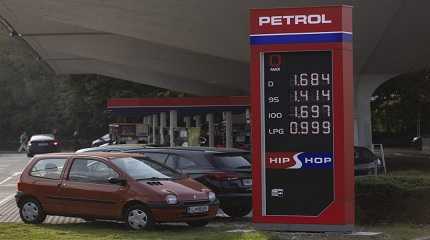
BRUSSELS, Nov. 30 (Xinhua) -- Yearly inflation in the Eurozone went down from 10.6 percent in October to 10 percent in November, thanks to lower energy prices, according to a flash estimate published on Wednesday by Eurostat.
This is mostly driven by the decreasing prices of energy, said the Eurostat. Year-on-year price increase for energy is estimated at 34.9 percent in November, compared to 41.5 percent in October.
Yearly inflation for non-energy industrial goods should remain stable at 6.1 percent, while the price of services should go down a tiny bit, from 4.3 percent last month to 4.2 percent in November.
However, the prices of food, alcohol and tobacco are still increasing on a yearly basis, going from 13.1 percent in October to 13.6 percent in November.
Spain, France and Malta are the three countries that should record the lowest inflation rates for November, at 6.6 percent, 7.1 percent, and 7.2 percent respectively.
The Baltic countries are expected to report the highest inflation rates: 21.7 percent for Latvia and 21.4 percent for both Estonia and Lithuania.
"We were due some good news," said Bert Colijn, senior economist for the Eurozone at ING. "The eurozone inflation rate ticked down after a few nasty upside surprises."
Yet caution should be applied, warns Colijn.
"Whether this is the peak in inflation remains to be seen. Another episode in the energy crisis could easily push inflation back up again and core inflation usually proves to be sticky after a supply shock," he said.
European Central Bank (ECB) President Christine Lagarde said on Monday, "We don't see the components or the direction that would lead me to believe that we have reached peak inflation and that it is going to decline in short order."
On the other hand, "government subsidies which offset the negative effects of higher energy prices on households and consumers do actually extend inflationary pressures," warned Carsten Brzeski, Global Head of Macro at ING, at the beginning of the month.
He said the energy crisis should also last until winter 2023-2024 and this will put pressure on the demand for natural gas as European countries will need to fill up their gas storage.




